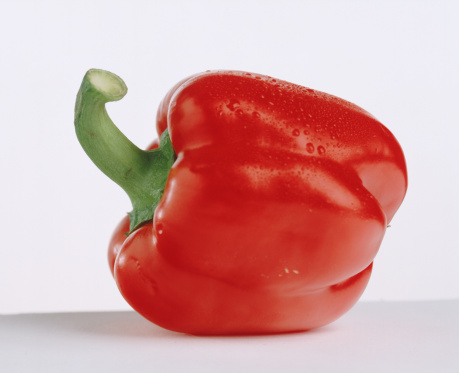
Most people who keep up with health and wellness are aware that eating “locally” and “in season” fresh produce foods will yield the highest amount of nutrients, taste sweeter and better, and that this practice is better for the environment due to low transportation and carbon footprint. But what if in our busy lives, we do not have the luxury or habit of taking daily trips to the market and buying local, organic and fresh produce is just not an option? What if we don’t have the monetary means to do so? Fresh is definitely best, but the second best option would be in the frozen aisles. If we must stray from the perimeter of the supermarket (a rule of thumb when shopping to gather healthiest essentials for the home and skip the processed “fun” foods that many times wreak havoc to a healthy functioning system), here is a list of the best frozen foods to buy, that will still provide a good source of nutrients for the family.
When possible and also packages marked with a USDA “U.S. Fancy” shield, which designates produce of the best size, shape and color; vegetables of this standard also tend to be more nutrient-rich than the lower grades “U.S. No. 1” or “U.S. No. 2.”
Choose 100 percent vegetables (they should be the only things on the ingredient list). According to the American Dietetic Association, there is no no nutritional difference among the boxed, bagged, or steam-in-bag plain varieties, so go with whatever you like. Make sure the vegetables haven’t frozen into a lump―a sign that they have been thawed and refrozen. Also note serving sizes per package.
Frozen foods should contain no High Fructose Corn Syrup (HFCS), which our bodies cannot break down and it becomes toxic in our bodies, and Hydrogenated anything (oils), or trans fats. If you can't pronounce it, stay away from it.
This is added calories, sodium, sugars and other possible preservatives and artificial flavors and colors. (brandeating.com)
Frozen foods are not invincible. They will get freezer burn and degrade in nutrients and quality. No one likes cardboard and chewy substances for dinner. Be mindful of the expiration dates and label them in bigger numbers so you can see them. (foodrepublic.com)
Steam rather than boil or microwave your produce to maximize nutrients and minimize the loss of water-soluble vitamins. Most frozen vegetables go through minimal processing before packaging (unlike the canning process that strips the foods of almost all nutrients through the high temperatures and chemicals from the lining of the cans). Adding defrosted vegetables into a stir fry is another great option. Yet another is to blend them into a puree, dip or smoothie.

A great immune booster and brain builder. Top them on a morning oatmeal and quinoa compote and into smoothies with a handful of dark leafy greens, Greek yogurt keifer, and almond, hemp or flax milk.
Spinach, broccoli, kale, edamame, peas: all contain vitamin C, which helps the body heal and fight off infection, and most have a great amount of vitamin A (eye building vitamin) and K (blood and bones). These vegetables are also a great source of plant protein and have folate, carotenoids and phytochemicals.
Watch the sugar content.
Help lower cholesterol and protect your DNA, plus they have anti-cancer benefits. For an easy prep option, just throw them on a sheet pan with a little olive oil and chopped garlic, and then roast at 400° for 35–40 minutes.

They contain beta carotene and a great source of vitamin A, which helps keep the vision strong. Full of fiber and great in stews, stir fry, dips, sauces, smoothies and muffins (try a paleo carrot pumpkin muffin).

Both are fall and winter vegetables, but “off-season” vegetables are packaged at the peak of the season and still yield great nutrients! This vegetable is like a multivitamin on your plate, protecting you from a host of ills. Top puréed winter squash with cinnamon and maple syrup for a cold-weather treat, or for a more savory soup, blend squash, low-sodium broth, and sautéed onion. I like to roast them in the oven with a dollop of coconut oil and agave and a dash of sea salt. The kids love this and can also be a baby’s first food.

These are one of the healthiest foods on this earth. The frozen peppers can be used in fajitas and morning scrambles or in stir frys (to give some examples). You can also toss them into soups or casseroles or add them to fish and other vegetarian recipes. (photo credit: xfinitiy.comcast.net)

Contains vitamin K, which helps keep bones strong, notes the U.S. National Library of Medicine. This vegetable is an excellent source of fiber. It is often eaten raw and frozen cauliflower can be cooked in casseroles or added to soups, dips and salads. My favorite is the garlic mashed cauliflower. Kids love this and it can also be one of children’s first foods.

This is usually prepared and frozen in microwavable ready bags and is a great alternative to other carbs and is perfect for busy people. Both brown rice and quinoa have more fiber than their white counter parts and additional protein as well. One of my favorite items from Trader Joe's is the frozen quinoa duo, mixed with vegetables and spices. I like to top this with kale. A fast, healthy and delicious meal!
If you live in a city where there are specialty health markets (Mother’s Market, Sprouts, Whole Foods, Gelson’s, Trader Joe’s), there are more and more “sprouted” selections of bread items. And even if you do not have access to a specialty store, more of the traditional stores (Publix, Ralphs, Vons) are starting to carry more organic and health conscious items. Sprouted simply means that the grains were unprocessed and soaked in water until sprouts grew, which helps the body absorb more of the vitamins, minerals and proteins easier. (Fresh.amazon.com)
